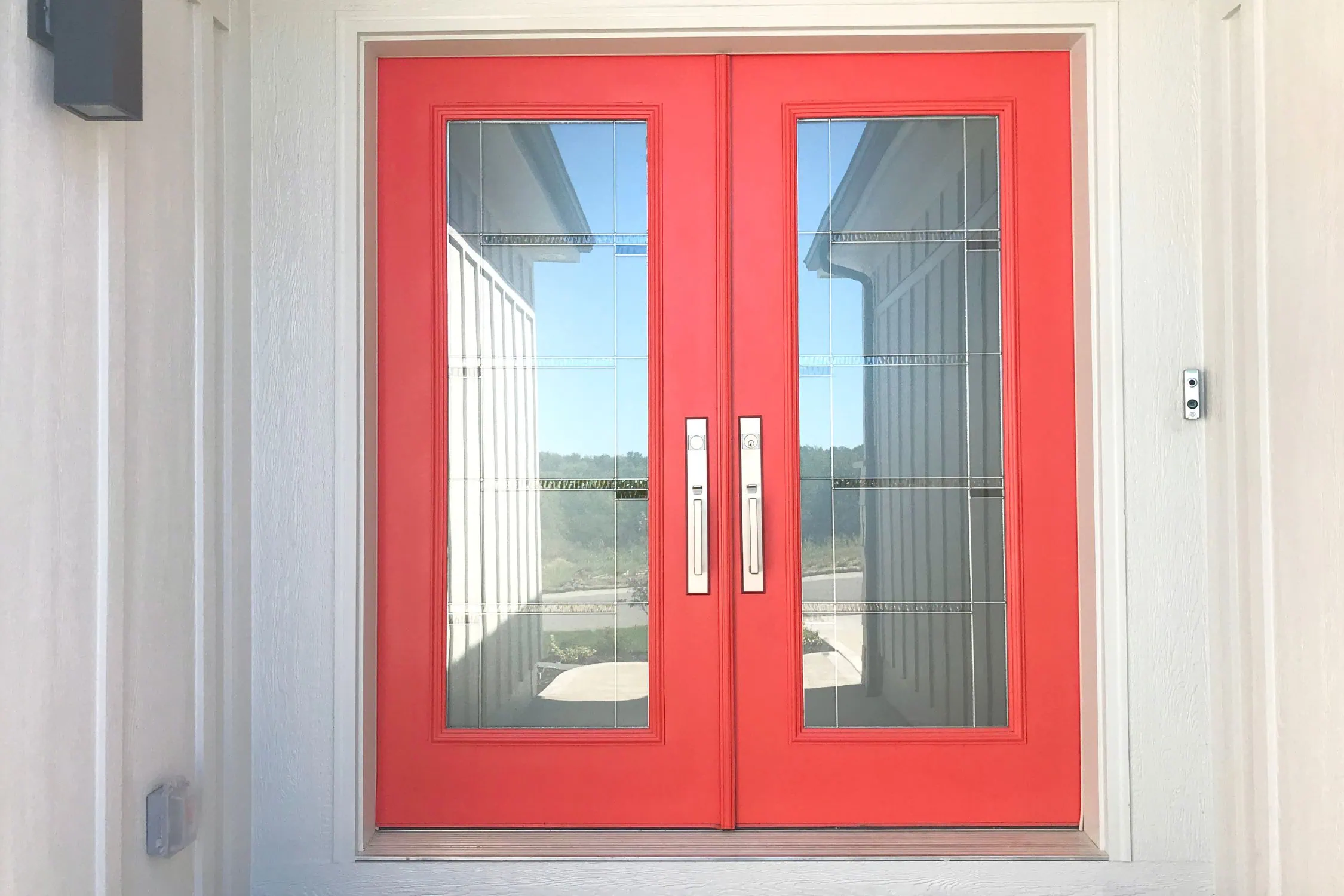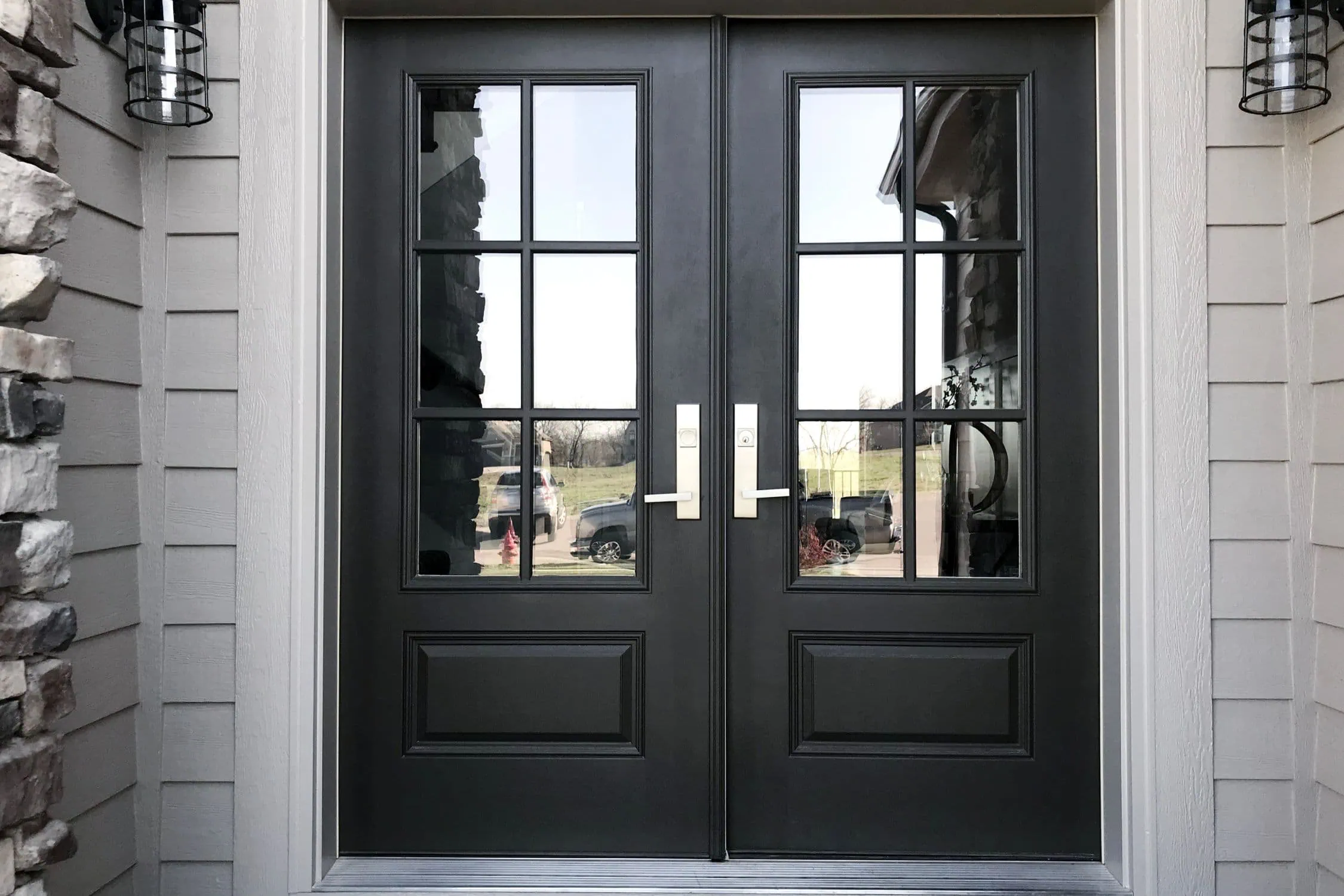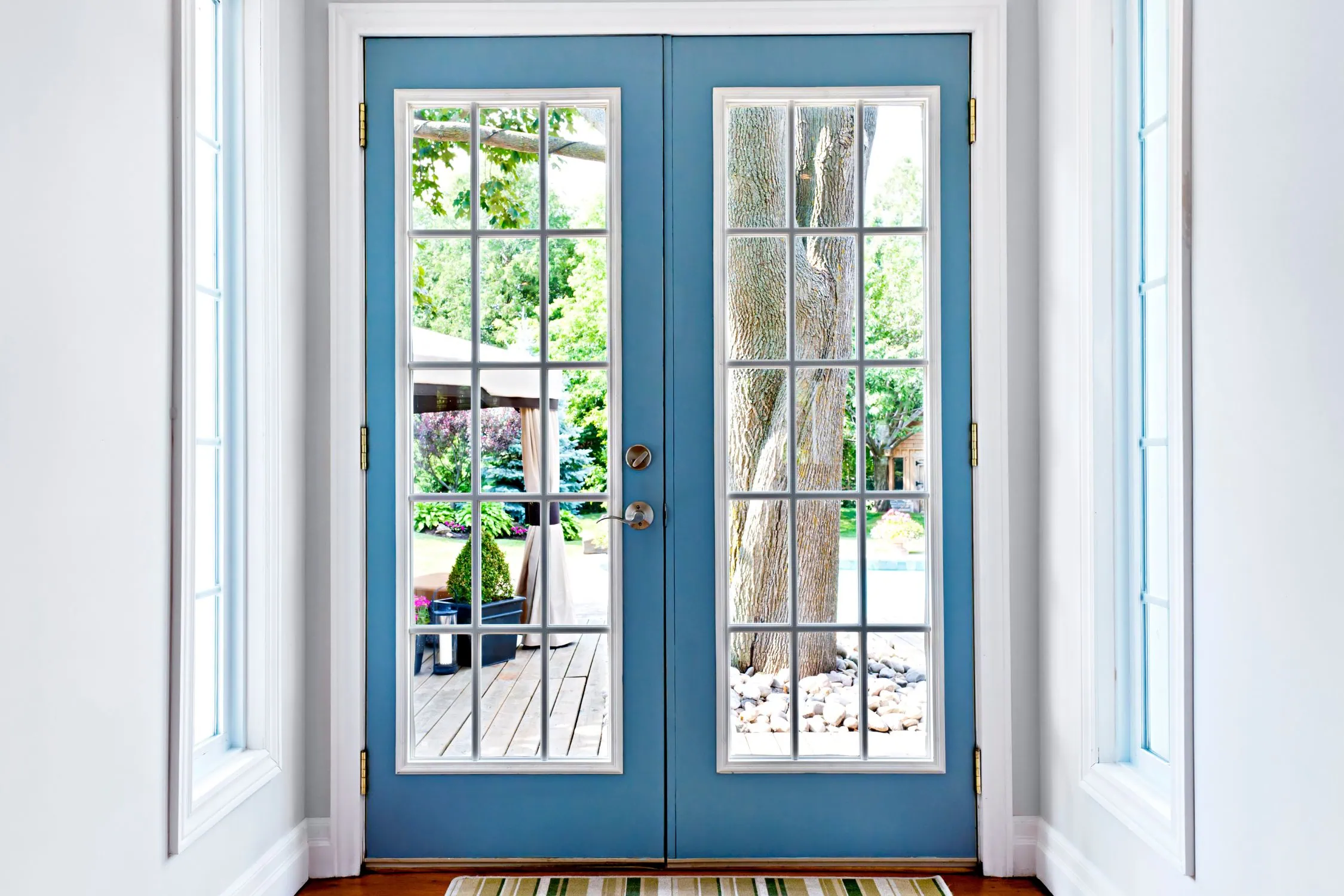Double doors have long stood as a symbol of elegance, openness, and architectural intention. They don’t just mark an entrance — they announce it.
But what exactly is a double door, and when does it make sense to choose one? Let’s dig into the details — and the design philosophy — behind this timeless feature.
Double Door Meaning
At its simplest, a double door is a set of two adjacent door panels that open from the centre — either swinging outwards, inwards, or sliding apart. They can mirror each other in size (called equal pairs) or vary in width (unequal pairs), and may or may not include a central mullion or astragal for sealing.
Think of it like this: single doors are about access; double doors are about experience. Open them both, and you double the visual drama, physical clearance, and impact.
Double doors can be configured to:
- Open independently or together
- Swing or slide
- Feature glass, solid panels, or both
Most double doors are inswing by default, meaning they open inward into your home. Outswing options are available too, especially for exterior applications, but they come with different pros and cons.
Inswing double doors take up space inside the home when opened, which can interfere with nearby furniture or narrow hallways. Outswing double doors, on the other hand, preserve indoor space but may be slightly less insulated. They can also be vulnerable to strong wind gusts, which might cause them to slam open against the exterior wall or swing uncontrollably — like a storm door.
Where Are Double Doors Typically Used?
Let’s walk through a few popular use cases:
- Front Entry: Want curb appeal that turns heads? A pair of beautifully crafted double doors transforms a facade into a statement. They're especially popular for homes with wide entry porches.
- Patio or Garden Access: A double door leading to the backyard patio is often referred to as a French door or a patio door. These create a seamless transition between indoor comfort and outdoor relaxation. Ideal for summer entertaining.
- Master Suites: In interior design, double doors separating a master bedroom and ensuite or walk-in wardrobe bring a boutique-hotel vibe.
- Dining Rooms or Lounges: They allow you to close off formal spaces, or open them up entirely when you want the layout to feel expansive.
Pro tip: If your room is slightly underwhelming, double doors can make it feel 30% more luxurious with almost no architectural intervention.
Ready to explore options? Browse our double front doors collection to see styles, finishes, and configurations that could be the perfect fit for your space.
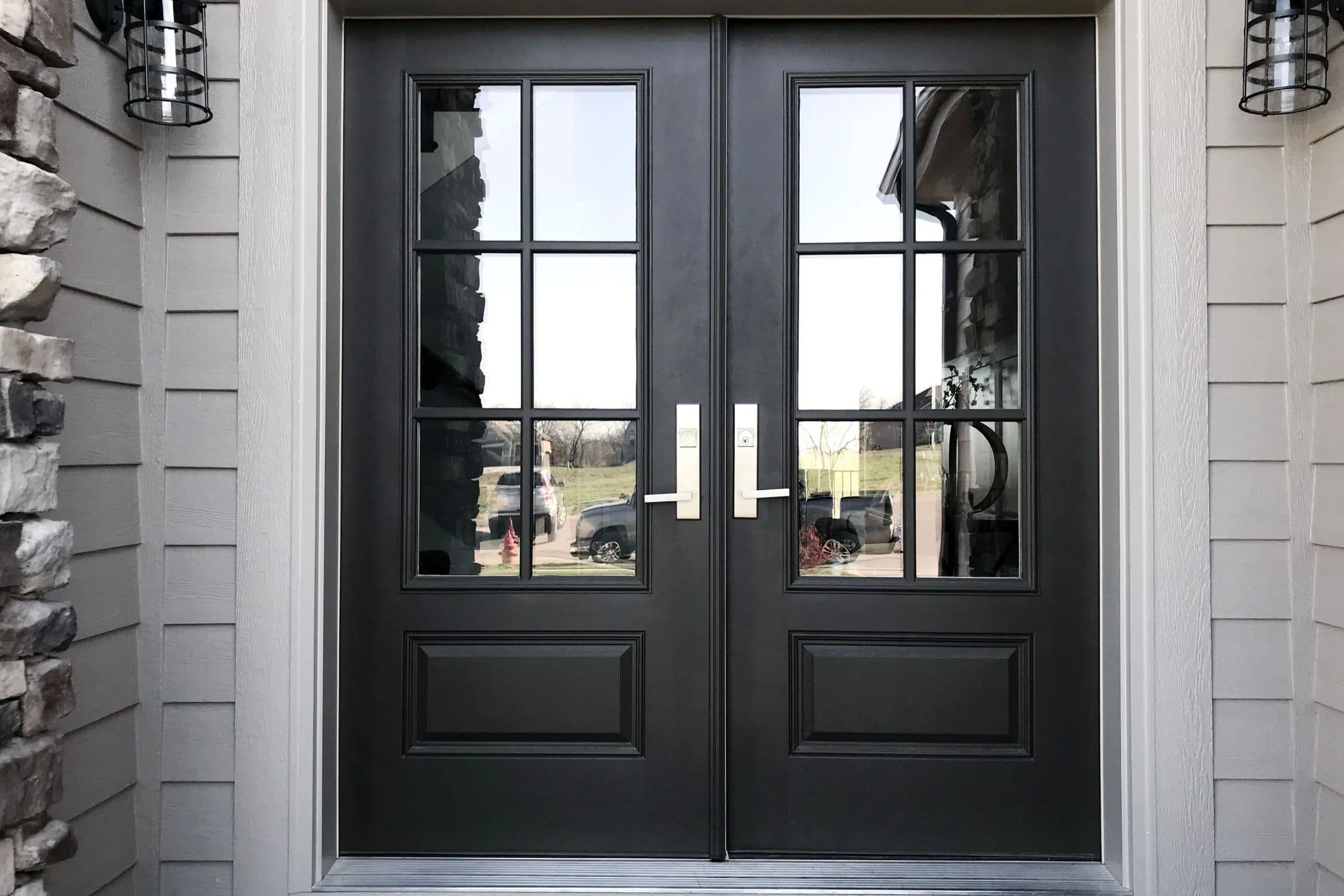
Double Doors Types (And Why They Matter)
French Doors / Patio Doors
Classic and timeless. Full-height glass panels framed in timber or metal. They bring in light, views, and a sense of openness — ideal for patio access or between indoor rooms.
Solid Panel Double Doors
Think bold timber, matte black steel, or composite. Great for privacy and sound insulation, often used for home offices, bedrooms, or formal front entries.
Sliding Double Doors
A space-saving option where panels glide on tracks. No swing clearance needed. Common in modern homes or where you want to preserve floor space (e.g. terraces).
Benefits of Double Doors (Beyond the Obvious)
Let’s get real — you're not installing double doors just to impress the neighbours. Here's what they actually do for you:
- Accessibility: Need to move a piano, fridge, or pram through the front door? Double doors save your back — and your walls.
- Better Flow: Hosting friends? Managing kids and pets? Two open panels = less chaos and more comfort.
- Natural Light: Particularly with glass doors, you'll brighten up dark hallways or transition zones without needing to switch on a single light.
- Property Value: Yes, they’re an investment — but one that often pays back in style points, buyer interest, and perceived space.
When Should You Consider Installing Double Doors?
You don’t need double doors everywhere, but there are clear signs it’s the right move:
- Space & Clearance: Measure not just your opening, but also what passes through it. If you've ever tilted a couch diagonally through a hallway, you know what I mean.
- Traffic Flow: Do people get stuck in the hallway when someone opens a door? Do you entertain often? Do kids barrel through your entry like a rugby team? These are all signs.
- Design Style: French doors say “classic”. Frameless glass panels say “modern”. Black steel frames say “urban industrial”. Match your door style to your home’s narrative.
- Budget: They cost more than single doors — typically 35–45% more for materials, labour, and hardware. But it’s a visible upgrade, not just a hidden splurge.
- Maintenance: Twice the doors, twice the hinges, twice the hardware. Plan for occasional tweaks and alignment checks.
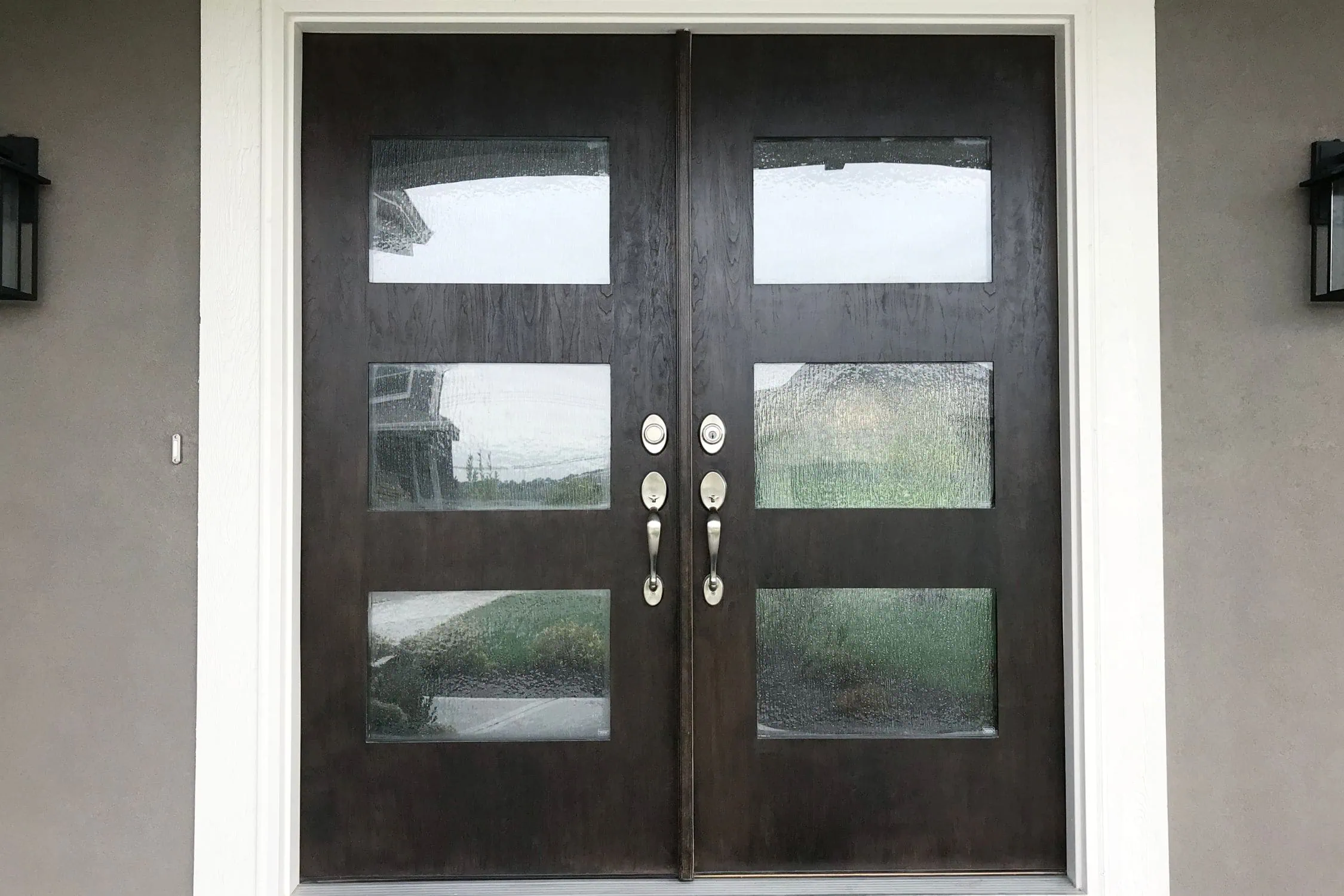
What Is a Double Door and Is It Right for You?
Double doors are a bold design move that says: this space matters. Whether you're looking to bring in more natural light, add a sense of elegance, or simply make your space more functional, double doors offer flexibility that single doors just can’t match.
That said, they do require more planning. Consider your layout, lifestyle, and budget — and above all, make sure the sizing and installation are done right. Poorly fitted double doors can lead to alignment issues, drafts, or long-term maintenance headaches.
And don’t forget to choose the right swing direction – inswing works for most entryways, but if you’re considering outswing, think about insulation, wind exposure, and local building codes.
Thinking about upgrading? Give me a call. I’ll help you assess your space, recommend the best configuration, and make sure everything is installed properly, so your doors look great and work perfectly from day one.
Read More:




